Ammachi and the Matrilineal Tradition of Kerela
- EIH User
- August 30, 2024
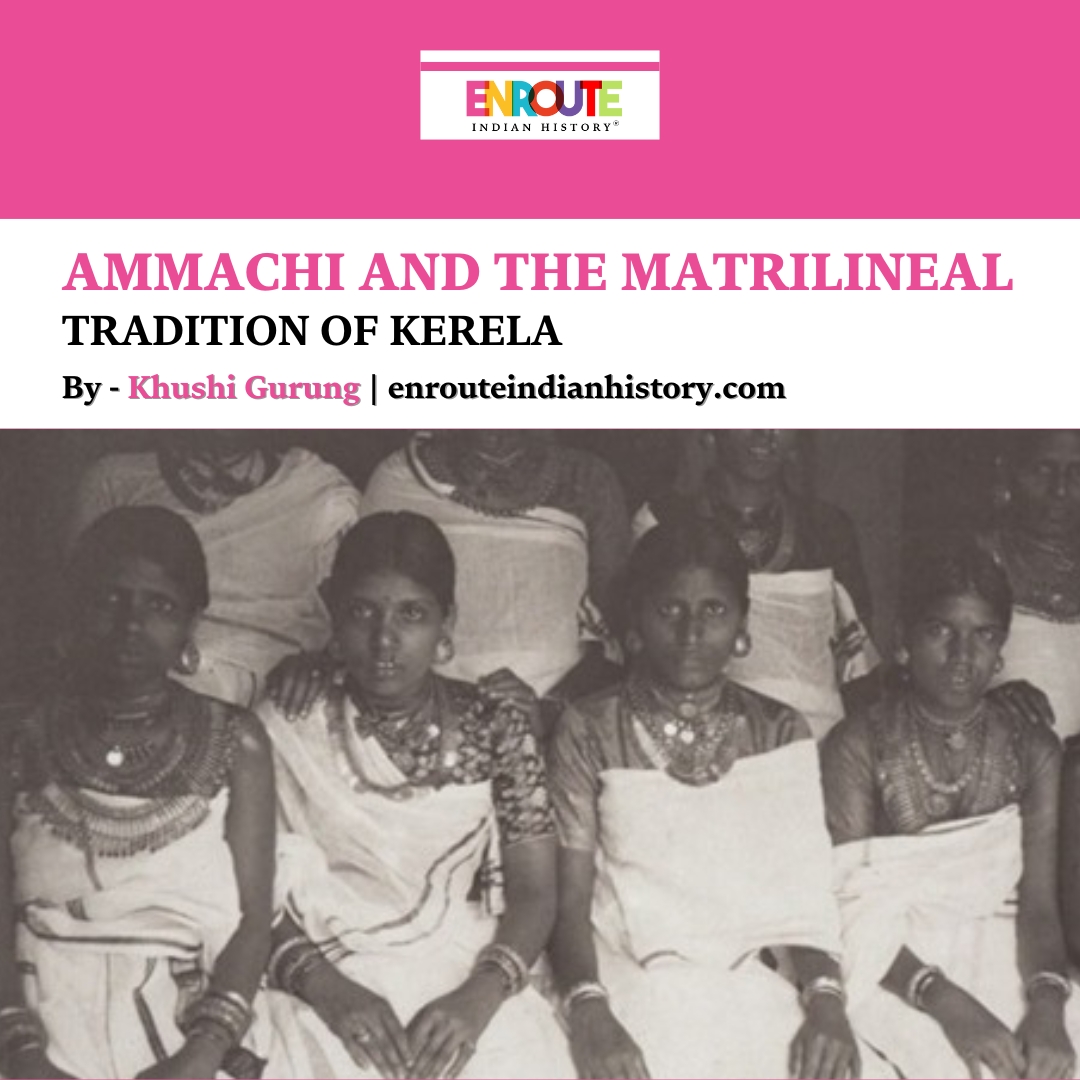
Matriliny in India is a fascinating social structure that defies the conventional norms of patriarchy. In a country where male lineage often dominates, pockets of matrilineal societies have thrived, offering a refreshing contrast to the dominant cultural narrative. Such societies are present in the verdant landscape of Kerala, where the backwaters weave tales of ancient traditions, there exists a unique societal structure that flips the conventional patriarchal norms on their head—matriliny. At the heart of this matrilineal system stands the Ammachi, the revered matriarch who wields not just familial power but a deep cultural significance.
Unlike many parts of India, where lineage and inheritance traditionally follow the male line, Kerala’s matrilineal communities celebrate the strength and wisdom of women as the cornerstone of family and society. This article delves into the intriguing world of Kerala’s matrilineal heritage, where the Ammachi reigns supreme, and explores how this age-old tradition continues to shape the social and cultural fabric of the region.

Source: TheHindu, Tanchavoor Ammavedu in Thiruvananthapuram constructed by the Travancore king Swathi Thirunal Rama Verma in 1840s.
Historical Background and how did this system work?
Matriliny in Kerala is believed to have its origins in ancient Dravidian traditions that predate the arrival of Indo-Aryan influences in the Indian subcontinent. The Dravidian societies, including those in the southern regions of India, often had more egalitarian gender norms compared to the patriarchal systems that later became dominant in North India. Matriliny in Kerala, is believed to have originated in ancient times, though pinpointing an exact start date is difficult. In Kerala, this manifested in the form of matriliny, where women held significant roles in both the family and society. The origins of matriliny in Kerala are often linked to the Nayars of Cochin and other related castes. The communities believed to have practiced this system were the Nayars of Cochin and Travancore, the Ezhavas and the Malabar Muslims of northern Kerala. The most researched and recorded among them have been the Nayar communities of central and southern Kerala.
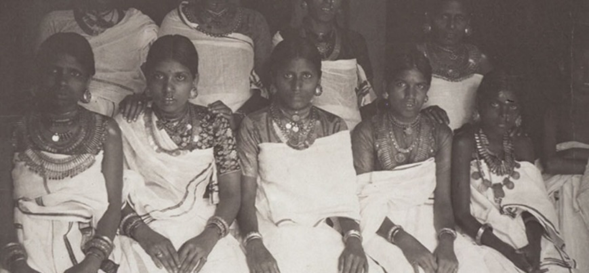
Source: LinkedIn, Group of Nayar women in Kerela, 1914.
There are, however, two views on this that have been passed down within the region. One is mythological and based on a Malayalam treatise called Keralolpathi, as well as and a Sanskrit work called the Kerala Mahatmyam. These refer to the creation of Kerala by the legendary hero Parasurama, who is supposed to have hurled his battle-axe from Gokarna to Cape Comorin and claimed from the sea all the land in between. He is then said to have awarded this new region (conveniently) to Brahmins, after which he summoned (equally conveniently) deva (divine), Gandharva (celestial minstrel), and rakshasa (demon) women for the pleasure of these men. The Nayars, the principal matrilineal caste, were the descendants of these nymphs and their Brahmin overlords, tracing their lineages in the maternal line. The other theory relates to the ancient martial tradition of the Nayars. Traditionally the Nayars were the warlords of Kerela waging wars, avenging defeats and protecting the kingdom. Boys were sent off to train in military gymnasiums from the age of eight, and their sole occupation thereafter was to master the art of warfare. Getting married and settling down was a hard option for them. So instead of going through a marriage ceremony they went through a social contract called ‘sambandham’ that allowed men and women to take partners. How did this contract worked? Typically, the women would stay in her ancestral house called a tharavadu. The man would visit a lady in her natal home every now and then, solely for sexual purposes, and the offspring would be her responsibility entirely. If a boy was born he, was he was send to fight more battles and if it was a girl she lived in the house until she attained her mother’s property. With men being so constantly away it fell upon the women to run the household and take decisions. In this tharavadu, the taravad was a large joint family system where multiple generations lived under one roof, and it was headed by the eldest female, known as the Ammachi. The Ammachi wielded considerable authority, managing the household, making decisions about property, and playing a crucial role in the upbringing of children. The Nayars, traditionally a warrior caste, adopted matriliny as a means of maintaining social order and stability. This system allowed property and titles to pass through the female line, ensuring that women held a significant position within the family and society.
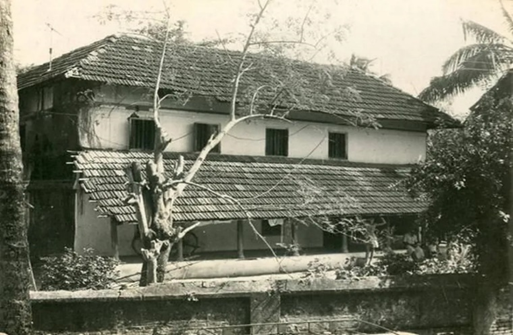
Source: RethinkingTheFuture, Tharavadu- the ancestral home of Ammachi’s in Kerela.
A hundred years ago in the kingdom of Travancore this was the norm. The royals too had to live by these rules. In the kingdom of Travancore, a king’s son was never crowned as the next king. Instead, the crown passed from the king to his nephew- his sister’s son. Interestingly, matriliny in Kerala is called Marumakkathayam (Marumakkam meaning Nieces or nephew). So, the term itself means the property or the crown goes directly to the king’s nephew. But how did this system work in the royal family of Travancore? The king usually married a woman from the Nair community. She was given the term ‘Ammachi’ meaning “the mother of the kings children”. But she did not have any official position or social standing in the court. She couldn’t even be seen outside with the king and live with him. Instead, she was given a large house where the ammachi stayed with pride and dignity. The queen’s role was played by the king’s mother or his sister. That sister would get married and eventually produced a new heir to the throne and that’s how the crown passed, from the king to his nephew. The most important person in this system was the king’s sister and not the king himself (which can be seen in major parts of the Indian subcontinent). Her son would go on to be the next king and her daughter the next queen. If she didn’t have a daughter, a girl child was adopted as a princess so that the royal lineage could continue. These queens had their own palaces and were quite a power centre unto themselves. They even had their own queendom, a territory called Attingal near Thiruvananthapuram. The king’s own children were not even considered royalties and were raised in ammavedus, the residences of the consorts of the Maharajahs of Travancore
Comparison of Ammachi’s Influence with Other Female Figures in Kerala History
The Ammachi, as the matriarch in Kerala’s matrilineal system, held significant influence within her family and community, particularly among the Nayars. Her role as the head of the taravad (ancestral home) made her a central figure in preserving cultural traditions, managing property, and maintaining social cohesion. However, when compared to other influential women in Kerala’s history, such as queens, leaders, and social reformers, the scope and nature of her influence reveal both similarities and differences.
The Ammachi wielded considerable power within the domestic and communal sphere. Her authority was rooted in the matrilineal system, where lineage and inheritance were traced through the female line. As the head of the family, she controlled the family’s assets and made key decisions regarding property, marriage, and the upbringing of children. This domestic dominance was crucial in a society where the stability of the taravad depended on the matriarch’s wisdom and leadership. While the Ammachi’s influence was largely confined to the family and local community, her role was vital in maintaining the social and cultural fabric of matrilineal society. Her authority ensured that women had a central role in familial and economic matters, which was relatively uncommon in other parts of India.
In contrast, queens like Sethu Lakshmi Bayi of Travancore had influence that extended far beyond the domestic sphere, reaching into the political and administrative domains. Sethu Lakshmi Bayi, who ruled as the Regent Maharani of Travancore from 1924 to 1931, implemented significant reforms in education, women’s rights, and public health. Her decisions shaped the course of the state’s history and had a lasting impact on its development. Unlike the Ammachi, whose influence was more localized, queens like Sethu Lakshmi Bayi operated within the broader context of statecraft and governance. Their decisions affected not just their families but entire populations, and their legacy is remembered in the annals of Kerala’s history as one of leadership and reform at the highest levels of power. Kerala has also been home to several influential women social reformers, such as Akkamma Cherian and Ayyankali’s daughter Pennamma, who played pivotal roles in the social and political movements of their time. Akkamma Cherian, often referred to as the “Jhansi Rani of Travancore,” was a freedom fighter who led protests against the British colonial rule. Her leadership in the civil disobedience movement demonstrated courage and a commitment to social justice that extended beyond personal or familial interests. Compared to these reformers, the Ammachi’s influence was more conservative and inward-looking, focused on preserving traditional values rather than challenging or reforming them. While the Ammachi ensured the continuity of matrilineal practices, reformers like Akkamma Cherian actively sought to change societal structures and norms, often at great personal risk. In the spiritual domain, figures like Mata Amritanandamayi, popularly known as Amma, have had a profound impact on Kerala and beyond. Amma’s influence spans spiritual guidance, humanitarian efforts, and global outreach, affecting millions of followers worldwide. Her role as a spiritual leader contrasts sharply with the Ammachi’s more limited, community-focused influence. Amma’s reach is global, and her work in promoting compassion, love, and service extends far beyond the traditional boundaries of the family or local community.
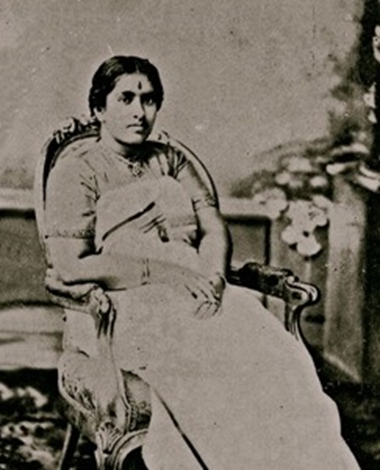
Source: Wikidata, Queen Sethu Lakshmi Bayi. Her title as ‘Maharajah’ in Travancore was influenced by the matrilineal system prevalent in the region.
In the 18th century, more than 50% of Kerala’s population was matrilineal. Kerala’s matrilineal system, placed women, particularly the senior female member called Ammachi, at the centre of familial authority. This was in stark contrast to the patriarchal norms prevalent in other parts of India, where male heads dominated family structures. Ammachi’s influence in Kerala’s matrilineal households was profound. As the head of the family, she held control over property, finances, and decision-making processes. Unlike patriarchal families, where the eldest male wielded absolute authority, Ammachi’s leadership was characterized by a balance of power, with her authority respected and her decisions often considered final. While patriarchal systems restricted women’s roles to the domestic sphere, Ammachi actively participated in the public and economic life of the community. Her authority extended beyond the household, influencing social, cultural, and even political matters within the larger matrilineal clan.
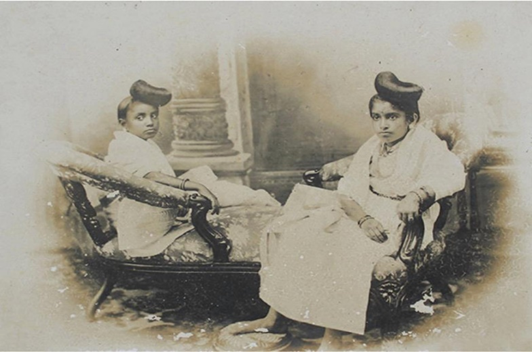
The social dynamics within a matrilineal household were distinct from those in a patriarchal family. In Kerala’s matriliny, male members, including brothers, sons, and nephews, were subservient to Ammachi’s authority. They lived in their maternal homes and contributed to the family’s welfare but did not possess ownership rights over property. Their status and roles were defined by their relationship to Ammachi and their responsibility to support her in managing the household. This created a system where women, particularly Ammachi, held significant power, while men played supportive roles. However, this did not imply a lack of respect or influence for men; rather, their authority was mediated through their roles as protectors and providers, ensuring the family’s prosperity under Ammachi’s leadership.
How did the system end?
We have got to know about Ammachis and her role in the tharavadu household but was this system fair enough for the females? It did give the women the security f their own houses, totally independent of their wandering husbands and got freedom of choice. Women were free to divorce, remarry and even widowhood did not mean the end of the world. But in the matrilineal system it wasn’t that the women had complete authority. The most important person in the household was still a man. When the period of war and conflict ended and the men returned to being members of the mainstream society, marriages became stronger and more monogamous. The upper caste men got ‘modern English education’ which was heavily influenced by the Victorian ‘family values’, where their own culture was accused of being barbaric and uncivilised. The mother’s brother called karanavar wielded much clout in the family. He managed the estates, checked the finances and decided who got married and when. Although women had more authority in the matrilineal system, this power was often confined to the domestic sphere. Women’s roles were still largely centred around family management, and they had limited opportunities for education and participation in public life.

Source: Art Work Only, There Comes Papa (1893) by Raja Ravi Varma depicts a Nair woman in the traditional mundum neryathum. The painting has also been noted by several critics due its symbolism of the decline of Nayar matriliny.
Things started changing in the 19th century when the European influence got stronger. To the Victorian mindsets these practices remained outrageous. They were unfamiliar with matrilineal practices and found the Marumakkathayam system to be complex and inconsistent with their legal norms. To bring uniformity and standardization to the legal system, the British introduced a series of legislative measures that undermined matriliny. And so in April 1925 the Legislative Council passed a bill terminating matriliny, permitting partition of property, “legalising” all sambandhams, and essentially inaugurating the age of the patriarchal family in Travancore. It was sent to the Maharani of Travancore for her assent and on 13 April she signed the historic Nair Regulation of 1925, giving matrilineal kinship the unique distinction of being the only system of inheritance and family in the world to be abolished by law. Similar Acts were passed for the Ezhava and Vellala communities also, sections of which were matrilineal. The Government of Madras would follow her lead in 1933 and do the same in Malabar, while Cochin would issue corresponding orders by 1938. One of the most iconic representations of these epochal social changes was that old award-winning painting by Raja Ravi Varma of Mahaprabha, holding in her arms her eldest boy. The cultural landscape of Kerala also underwent significant changes during this period. The influence of Western education and Christian missionary activities introduced new ideas about family structure, marriage, and inheritance, which were often in conflict with traditional matrilineal practices. The spread of patriarchal values, promoted both by colonial authorities and by sections of the native elite who had embraced Western norms, further weakened the matrilineal system.
Conclusion
The matrilineal system in Kerala, with Ammachi at its core, represented a distinctive social structure that empowered women and provided them with significant authority and economic security. Unlike patriarchal societies, where men dominated, Kerala’s matriliny allowed women, particularly Ammachi, to manage family affairs and property, fostering a unique balance of power within the household. However, as Kerala underwent modernization in the 19th and 20th centuries, the pressures of legal reforms, economic changes, and cultural shifts gradually led to the decline of this system. The transition from matriliny to patriliny and nuclear families marked a profound transformation in Kerala’s social fabric. While matriliny is no longer widely practiced, its legacy continues to influence Kerala’s cultural identity, highlighting the region’s historical commitment to gender balance and communal harmony within its social structures.
Bibliography
Arun, Shoba. “Matrilineal Communities, Patriarchal Realities: A Study of Gender and Social Development in Kerala.” New Delhi: SAGE Publications, 2012.
Gough, Kathleen. “Matriliny in Malabar: Social and Economic Origins.” Cambridge: Cambridge University Press, 1961.
Saradamoni, K. “Matriliny Transformed: Family, Law, and Ideology in Twentieth-Century Travancore.” New Delhi: Sage Publications, 1999.
Devika, J. “En-gendering Individuals: The Language of Re-forming in Twentieth-Century Keralam.” Hyderabad: Orient Blackswan, 2007.
Fuller, C. J. “The Nayars Today.” Cambridge: Cambridge University Press, 1976.
Pillai, Manu, “What Led to the End of Kerala’s Matrilineal Society?”, The Caravan, Adapted from “The Ivory Throne: Chronicles of the House of Travancore”, Harper Collins India Publications.
Sebastian, Sherly, “What Led To The Decline Of The Matrilineal Society In Kerala?”, Femenism in India.
Storytrails, “How did the Matrilineal system of Kerala work?” Also available in Youtube: https://youtu.be/zE_ZLo87YEs?si=Q4f-7gGEz89qzA9A



















